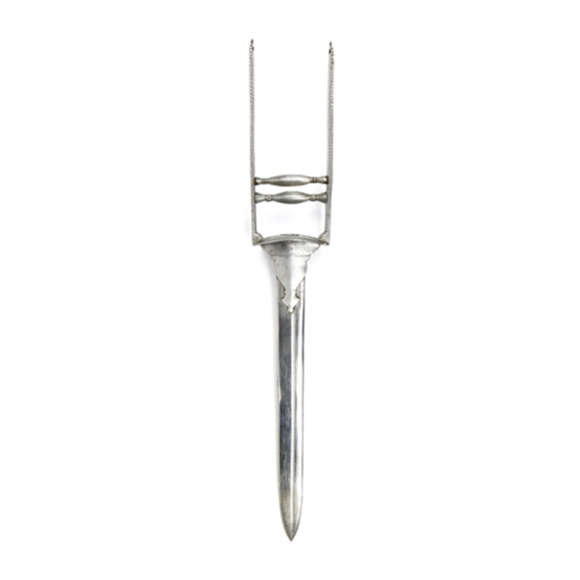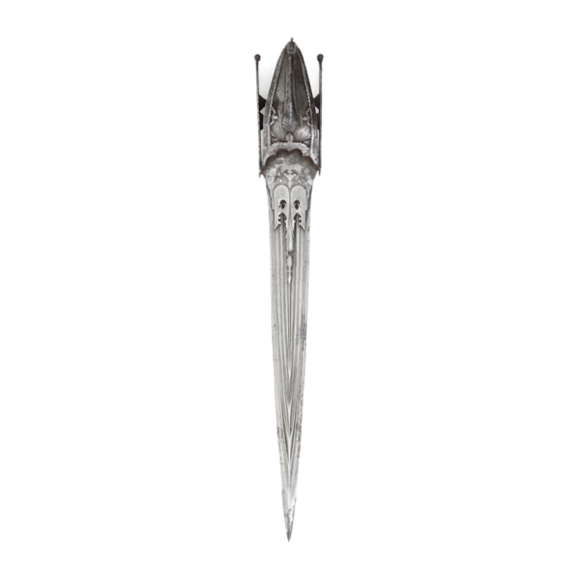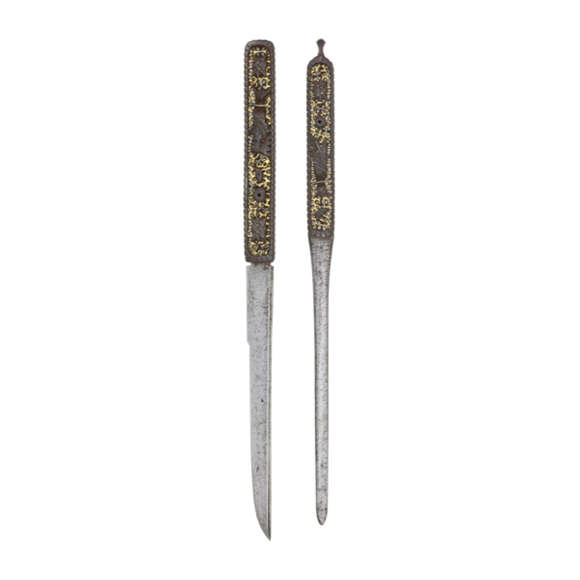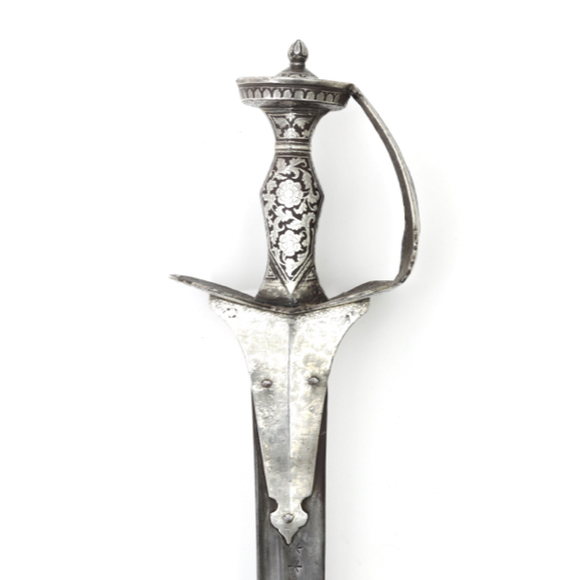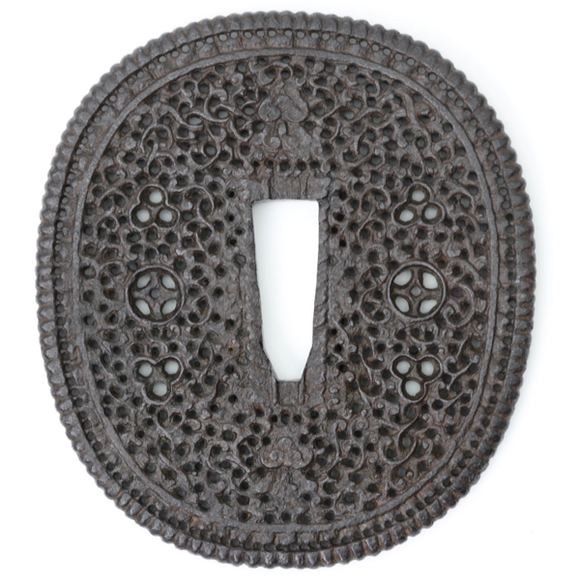An interesting South Indian style katar with an imported European blade.
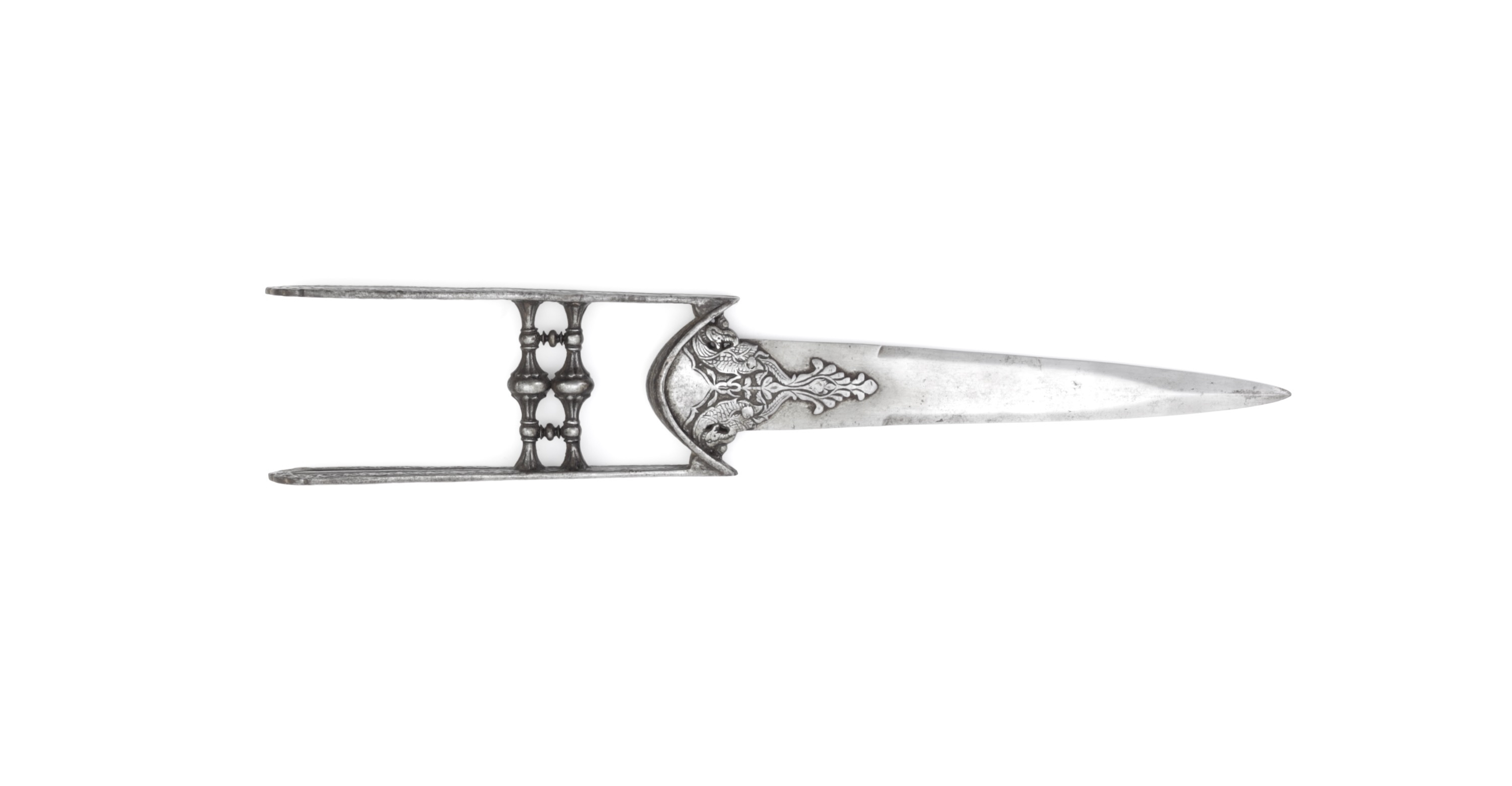
43 cm
23.1 cm
Base 3.5 mm
Tip 6 mm
Base 38 mm
Tip 19.5 mm
539 grams
At bottom of cupped base
Iron, steel
South India
17th century
Description
A classic South Indian katar with a narrow blade with an elongated triangular profile. Seen from the side, there is a notable "armor piercing" thickening in the tip.
The blade is held between two langets by means of three iron rivets. The base of the hilt is a deep cup, with two sidebars that gently widen in profile towards their ends. The grip consists of two handlebars with ball grips in the center, the classic style of the 17th century.
Between the handlebars are two spool-shaped elements that can turn.
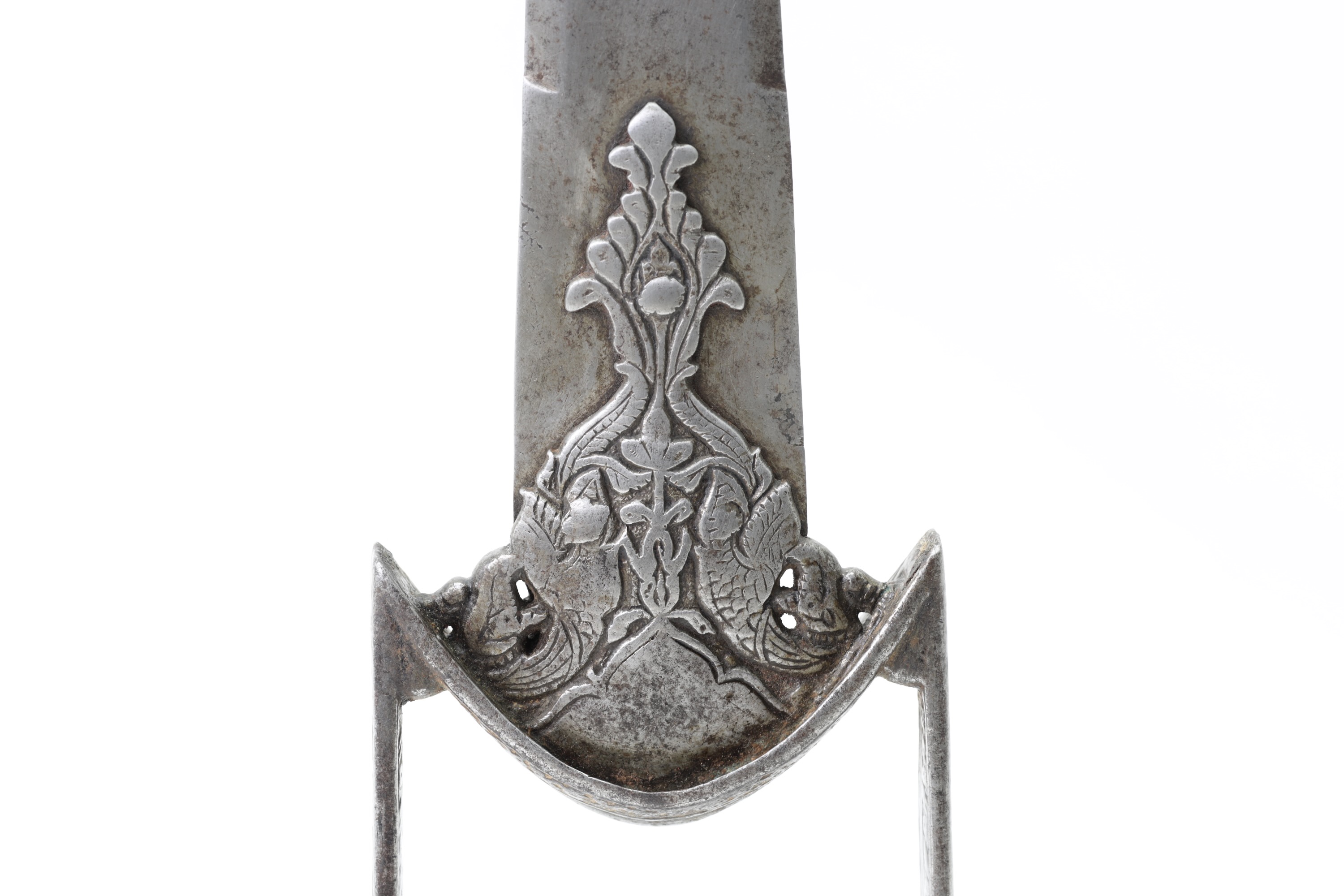
Yali decoration
The two yali on the langets are depicted in bird form, their tails joining to form a palmette structure that projects into the blade to give added rigidity to its base. Both heads turn backward and the creatures appear to stare along the blade's edges.
The depiction of these yali is typical for the southernmost part of India, the area formerly part of the Vijayanagara empire. The piece probably dates from the mid 17th century, around the time of the fall of the empire in 1646.
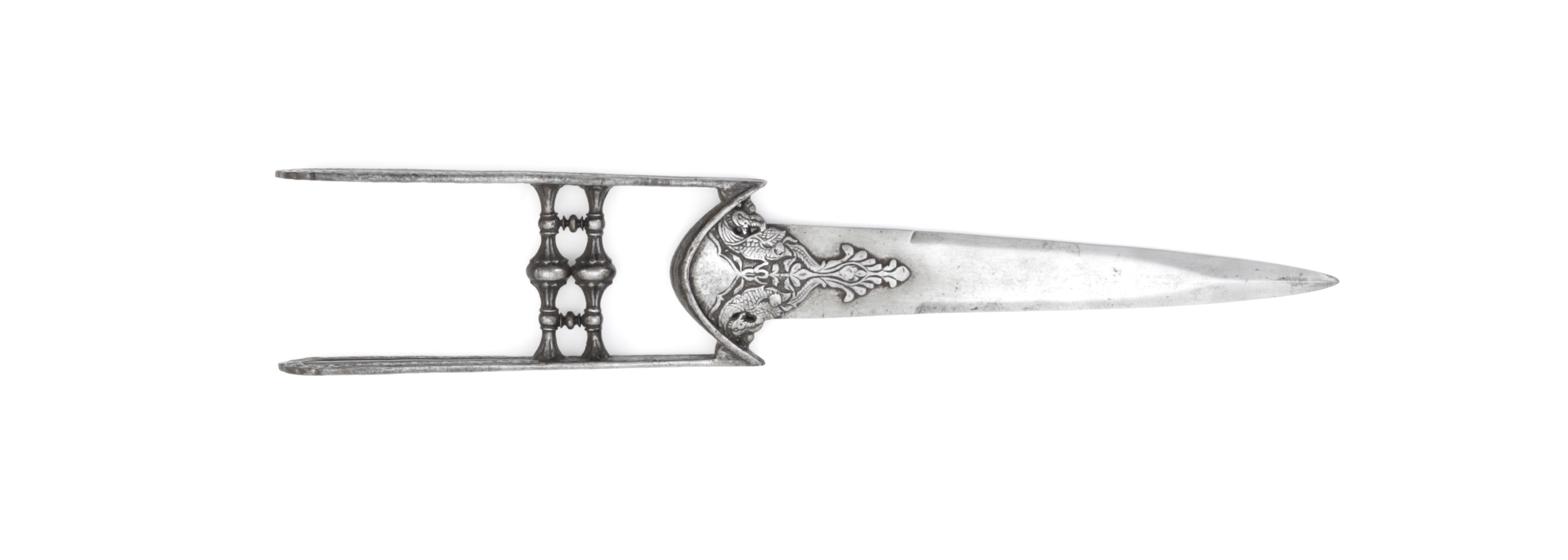
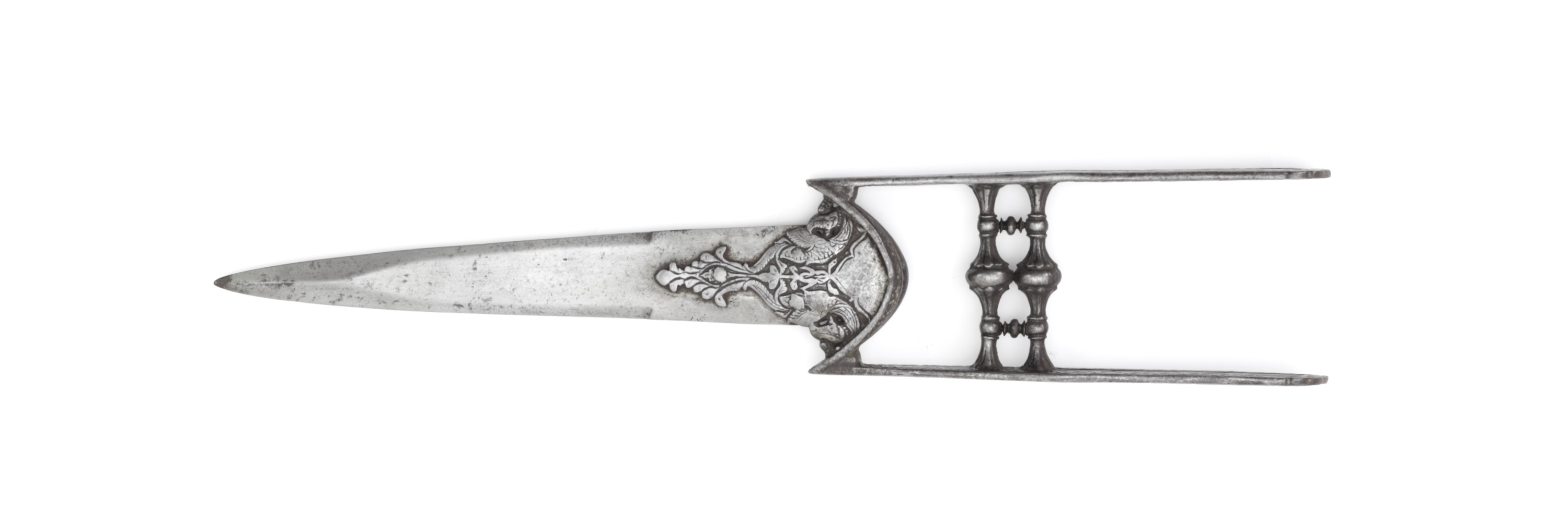


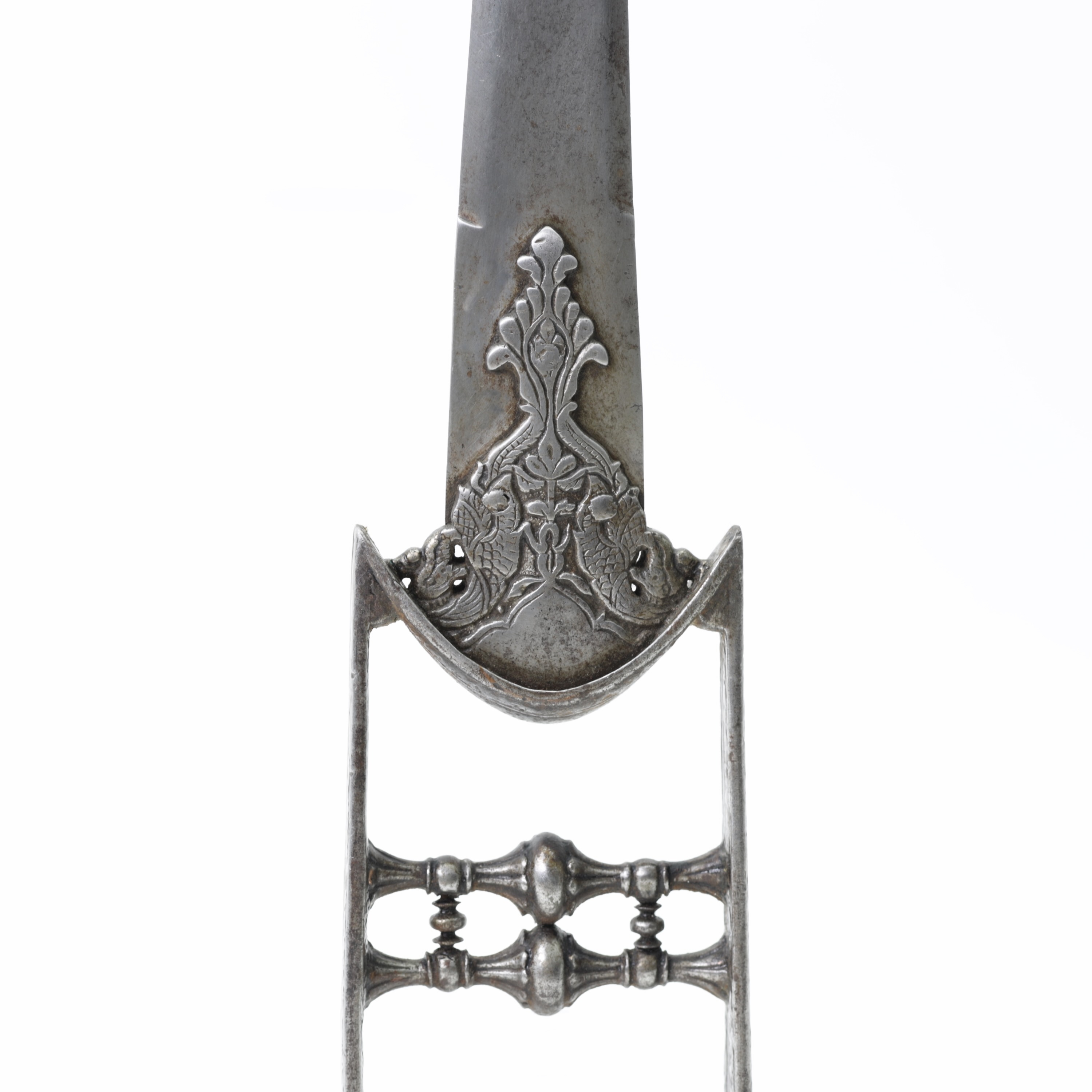
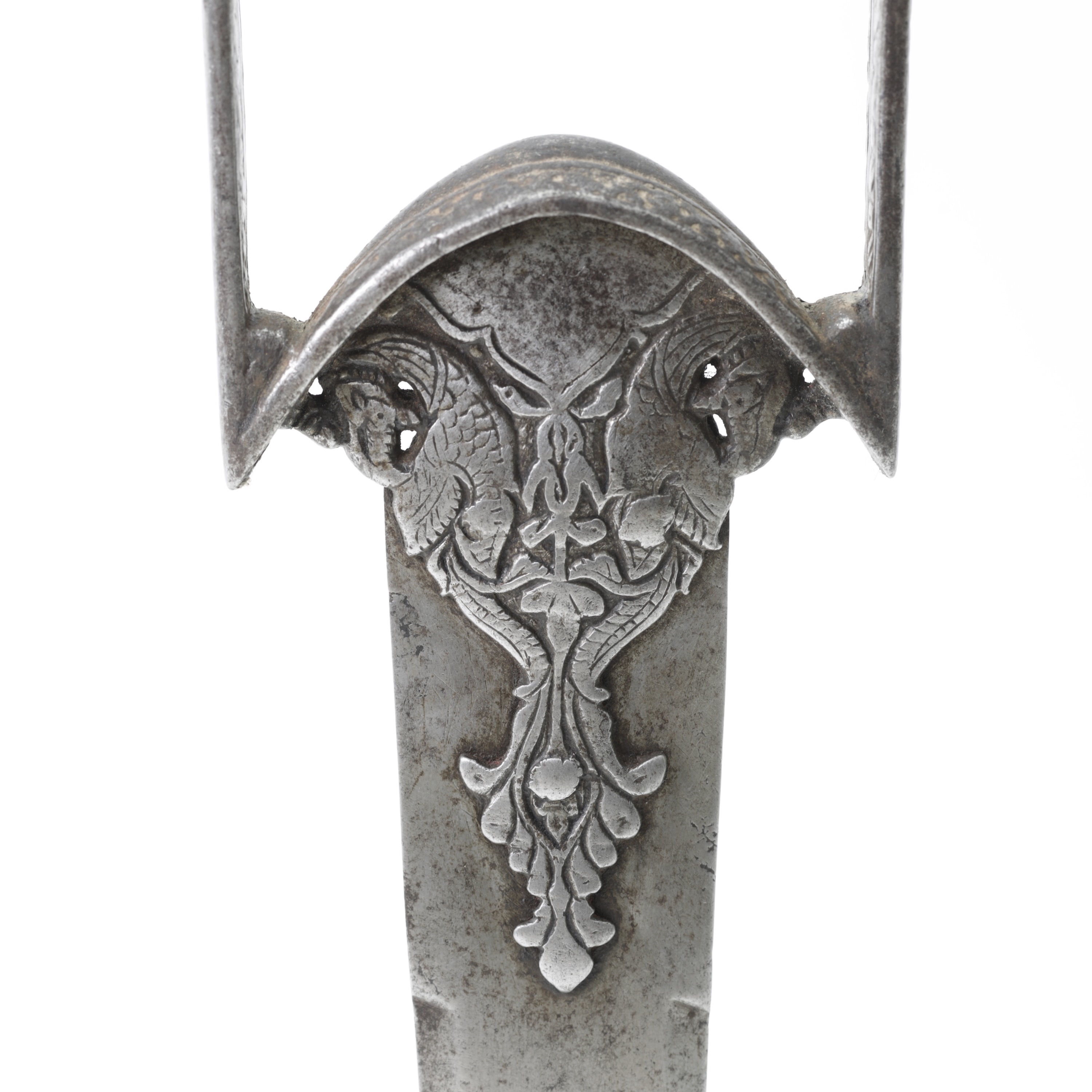
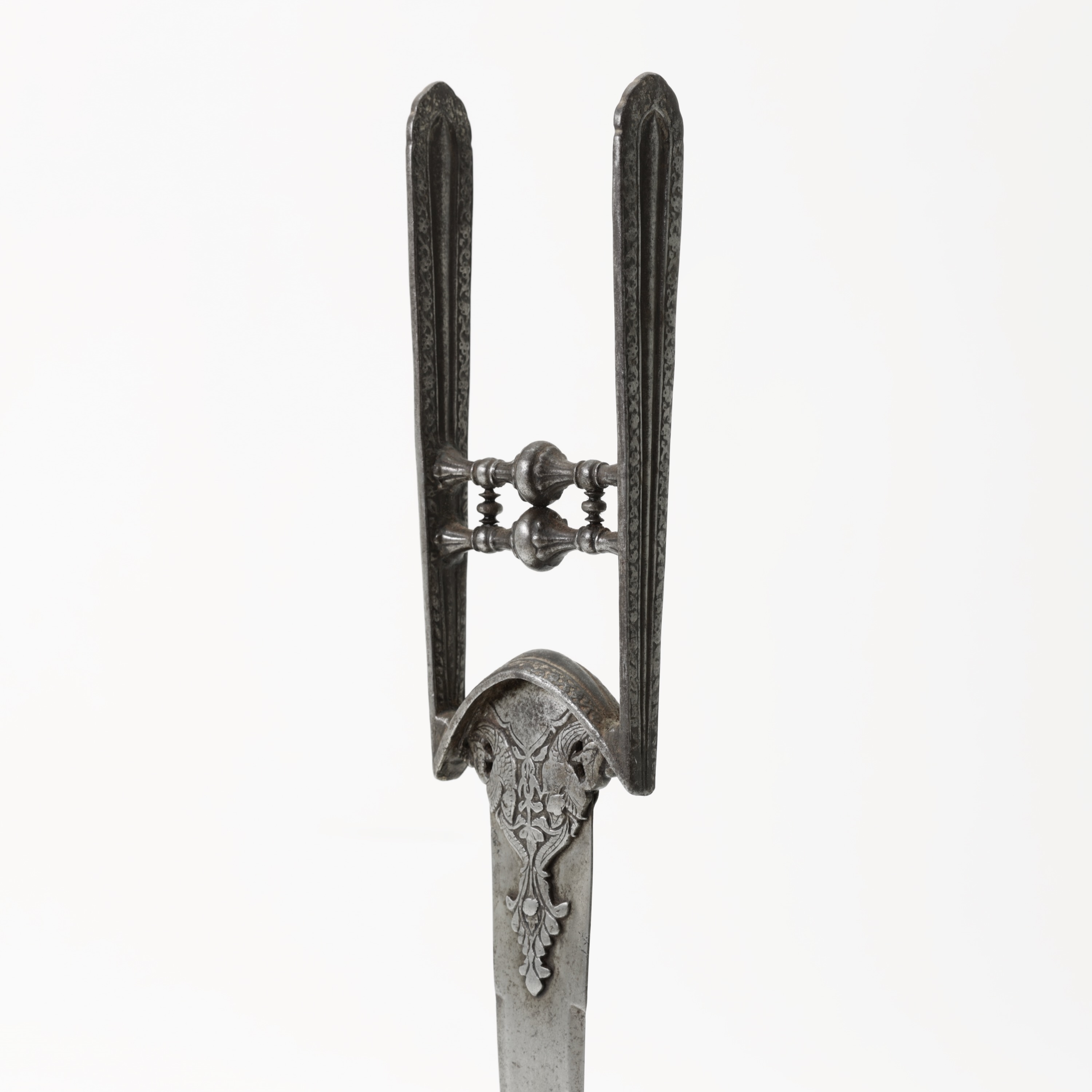
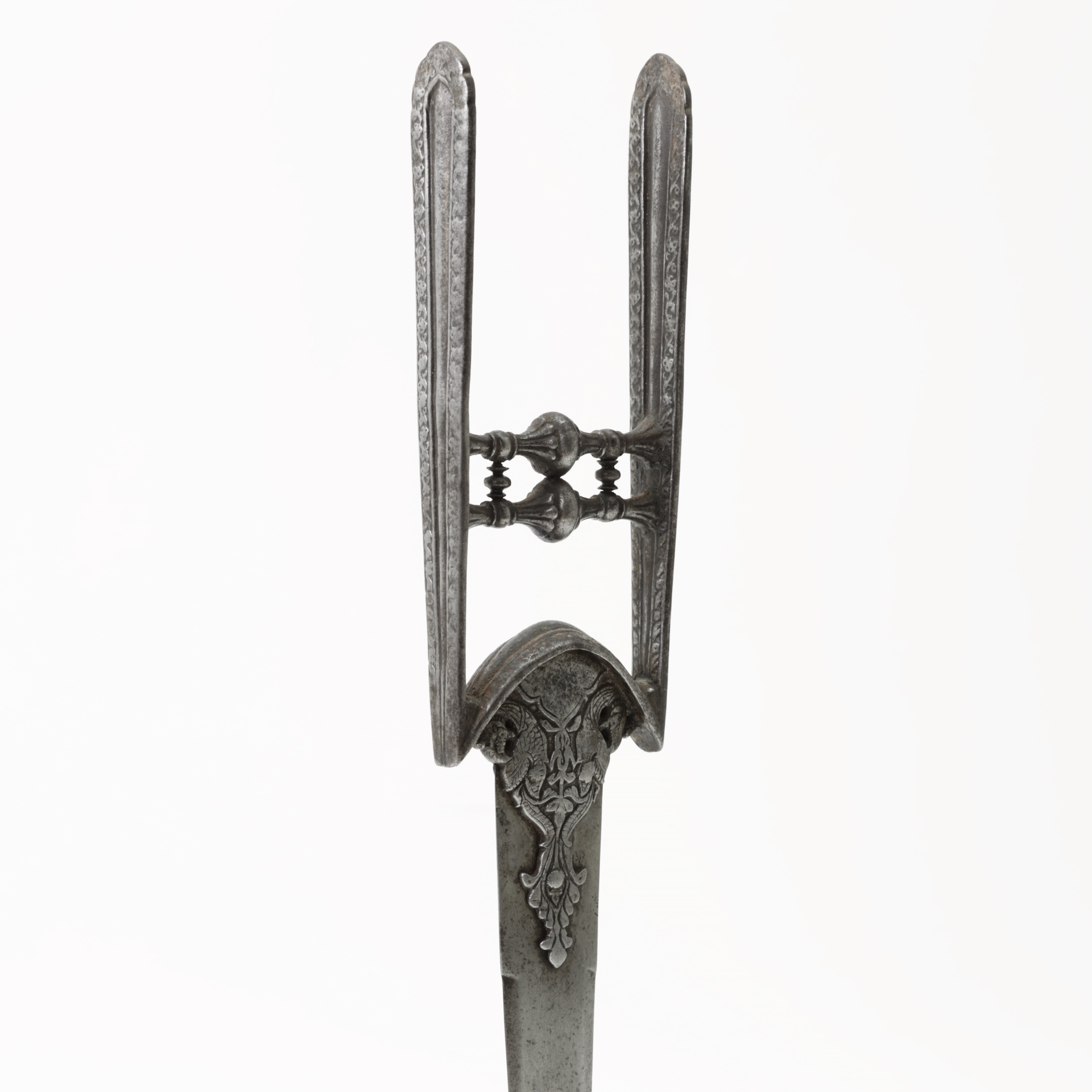
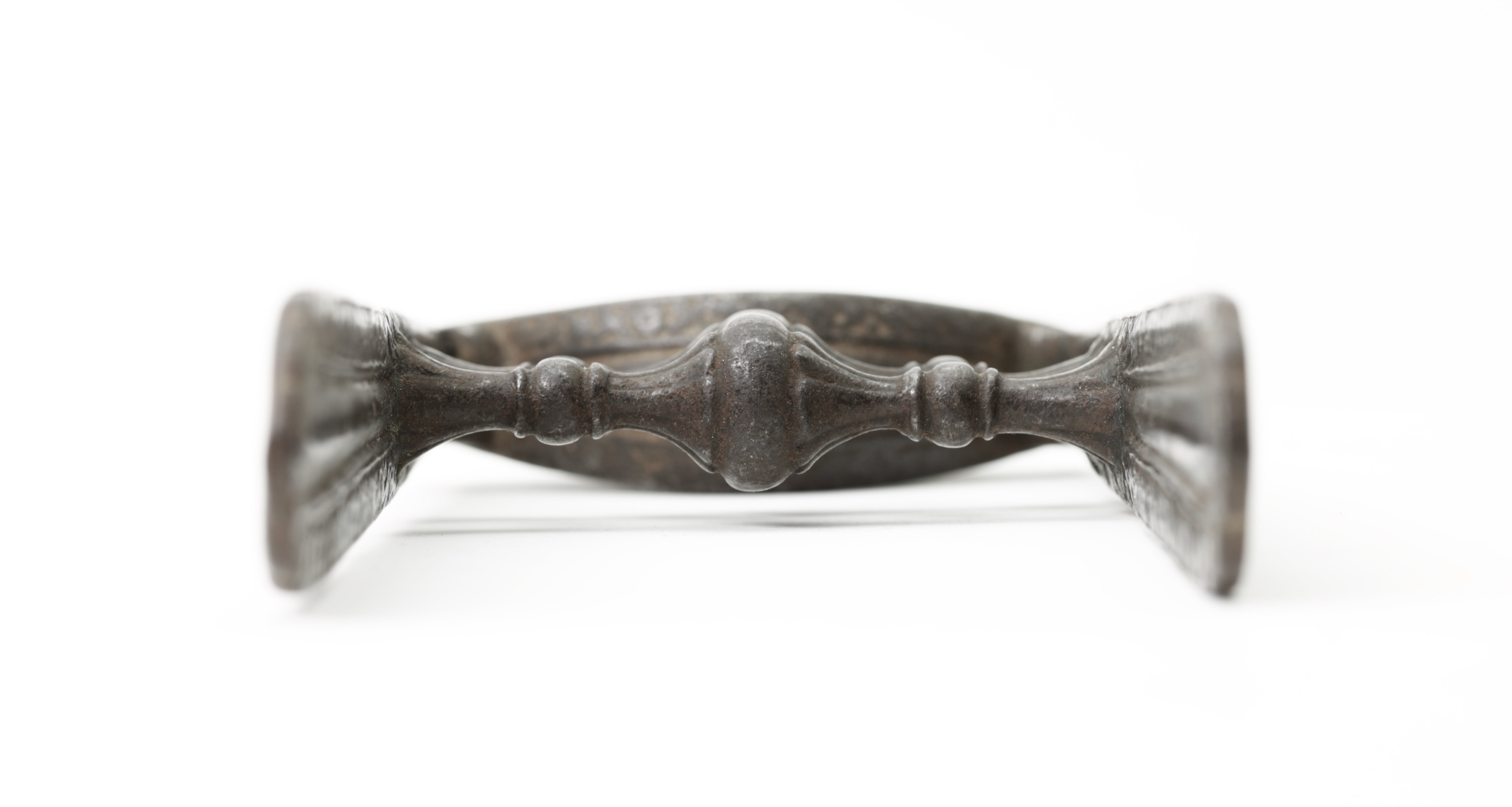
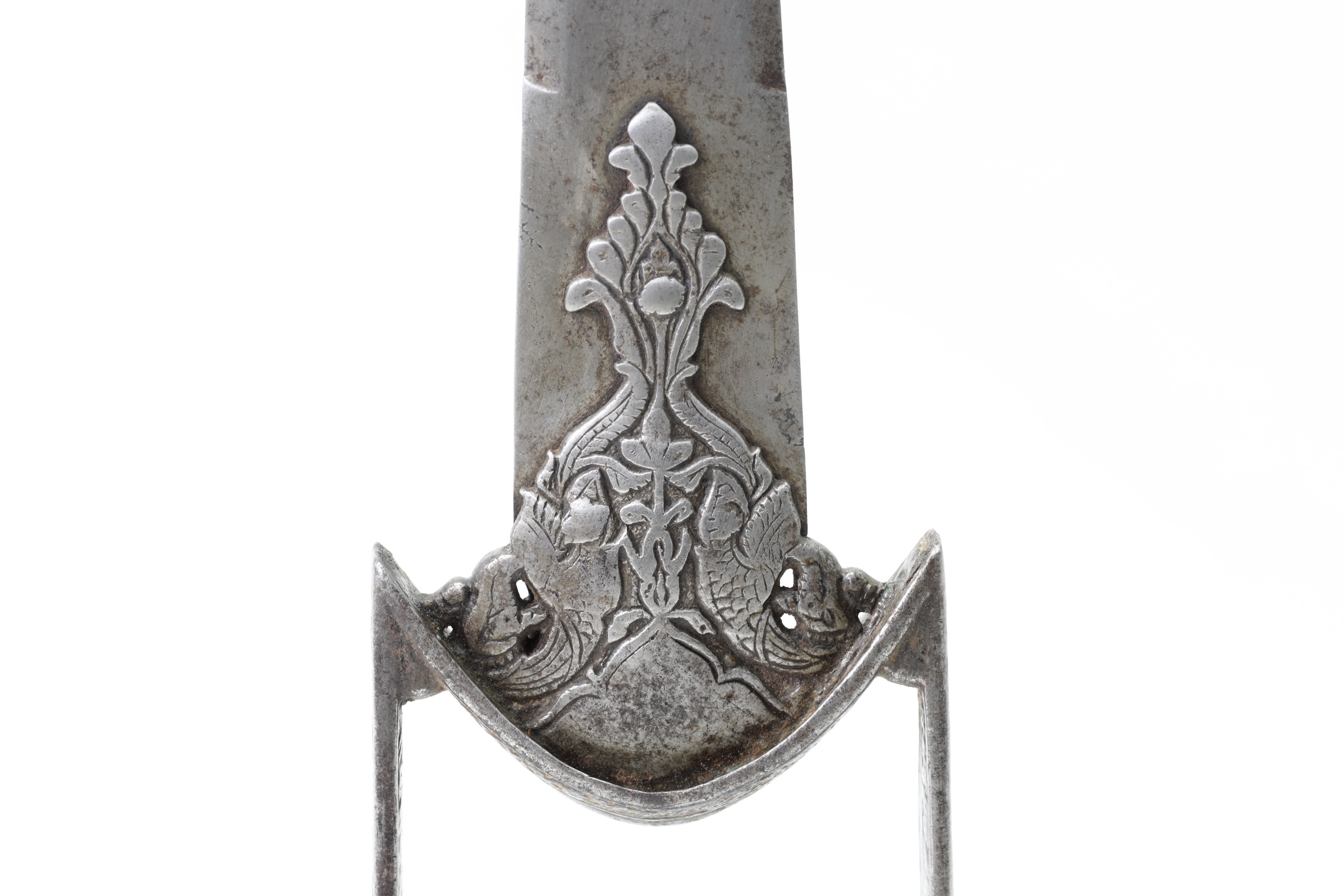
The only set of its type known to me in both private and museum collections.
The basket hilt is elaborately overlaid with silver in floral designs.

